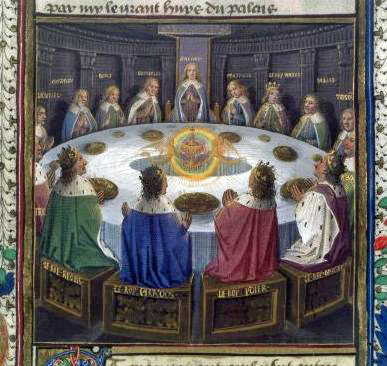
Knights of The Round Table
I often say the best thing Team Toolkit ever built was… the team itself.
Team Toolkit operates with a collaborative structure where each member has a lot of room to use their strengths, to support each other, and to have fun doing it. It’s a very low-ego environment, where we know each other’s strengths and celebrate each other’s contributions.
The team has terrific chemistry – we genuinely like each other. On the one hand it’s not possible to force this or manufacture good personal chemistry, but on the other hand this sort of thing does not happen by accident. Positive relationships within a team require a mix of deliberate effort and good luck.
From the start, Team Toolkit made it a priority to build these friendships and foster a certain type of environment. The fact that we worked on it and did it on purpose doesn’t make our relationships less real. It makes them more real.
Our mutual respect and appreciation for each other also made it easier for us to adopt a collegial, shared leadership structure, where everyone is able to make decisions and guide the direction of the team. There is no a single formal leader with executive decision-making authority for the team. Instead, everyone has the same authority. You could say it’s a leaderless group, but it is definitely not a leadershipless group. There’s a ton of leadership on Team Toolkit, and it comes from all of us.
For example, when someone has an idea for a new tool, workshop, or activity, we present the idea to the group and see who might be interested in doing it. We’re not assigning tasks or asking for permission as we would in a top-down style organization. Instead, we’re informing and making invitations. There is someone who leads each activity, and it varies depending on people’s interests, skills, and availability. In keeping with that spirit, let’s hear from some other members of Team Toolkit:
“The Shared Leadership structure shows up in our team meetings when no one person runs it every week. We take turns. Everyone runs point on workshops/has connections that they bring to the table.” – Rachel
“We play to each other’s strengths, both in sessions and through our weekly meetings. We acknowledge that we aren’t all experts, and are constant learners – learning from each other and from our shared experiences.” – Melanie
“The diversity of our team’s strengths and interests helps to ensure that folks commit to leading initiatives that they are genuinely interested in or good at, which leads to better results. i think we have strong trust too that you don’t have to worry about what’s NOT on your plate. You know other team members will deliver and that someone on the team will have your back/help if you should need it.” – Aileen
It’s a tremendously efficient and effective approach, and I think more groups should adopt it. There’s a lot of great research & resources out there about shared leadership, so if you want to learn more, consider starting with this piece by Joanne Fritz.

